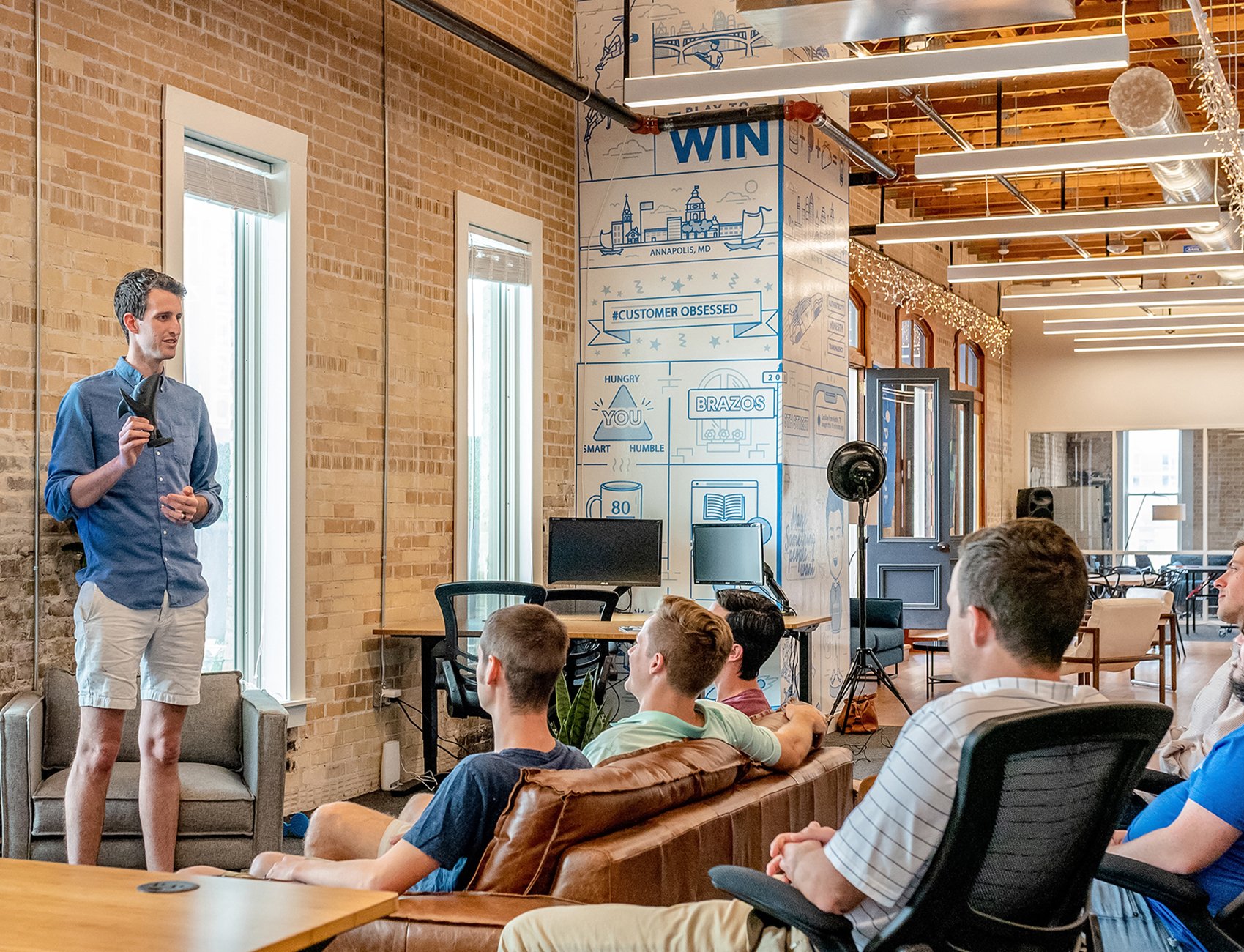Looking for help? Contact our Help & Support Team
- Home »
-
Ai staffing
Ai staffing






As the digital revolution continues to shape our world, artificial intelligence (AI) has become a ubiquitous presence, impacting industries far and wide. One such domain experiencing this transformation is the staffing and recruitment industry. AI’s capabilities have the potential to streamline operations, efficiently sift through vast amounts of data, and ultimately, match the right candidate with the right job. However, it is paramount to carefully consider the various aspects of implementing AI in this sphere, given that certain negative implications can undermine the very essence of an industry driven by human potential and success. Overlooking these counterproductive factors could have detrimental effects on the industry's ability to thrive and harness the unique qualities that humans bring to the table.

One of the significant concerns regarding the use of AI in recruitment revolves around the potential for biases in AI algorithms. Machine learning models are trained using historical data and hence, reflect the inherent biases in the data used. The ability of AI systems to learn from patterns in the data means that they may unintentionally perpetuate these biases when selecting candidates, even if programmed to evaluate them based on skills and qualifications.
For example, if past recruitment data indicates that a certain demographic has been favored over others, the AI system may continue this discriminatory pattern, jeopardizing fair employment practices. It's a stark reminder that AI is only as unbiased as the data it is trained on. Therefore, it is critical to ensure that AI models are developed with diverse and unbiased training data. Implementing regular bias checks and audits in the AI process can also help identify and correct these discrepancies, allowing for a more equitable hiring process.
As we delve deeper into the AI-powered recruitment era, another notable consideration is the risk of losing the human touch. The staffing and recruitment industry thrives on personal connections, which form the cornerstone of successful placements. The nuances of human communication, empathy, and instinct cannot be replicated by machines. While AI can quickly parse through thousands of resumes and profiles, the emotional intelligence required to understand a candidate’s aspirations, cultural fit, and motivation is uniquely human.
The shift towards AI-based tools could lead to an impersonal, transactional recruitment process. This shift could potentially alienate candidates and diminish their experience. Maintaining a balance between AI automation and human interaction is thus of paramount importance. It's about leveraging technology to enhance the recruitment process, not replace it.
Incorporating AI into the recruitment process should never completely eliminate human interaction. Recruiters must strive to create a hybrid model where AI handles the heavy lifting of sifting through data and shortlisting potential candidates, leaving recruiters with more time to engage with candidates on a personal level. This way, we can harness the efficiency of AI without sacrificing the personal connections that lie at the heart of successful recruitment.
The emergence of Artificial Intelligence (AI) in recruitment has been a game-changer, promising to level the playing field for candidates. However, it's not all smooth sailing. Recent reports suggest that the technology designed to make hiring more equitable could inadvertently perpetuate inequalities. Thus, caution flags are being hoisted, and it's time we paid attention to these warning signals.

A study published in Nature Machine Intelligence on March 13 revealed a concerning lack of transparency in tools like LinkedIn Recruiter, which employs an Automated Decision System. This system uses algorithms to make decisions independently of human intervention, raising questions about potential hidden biases. The study authors suggest a "nutrition label" approach to make it explicit how AI makes its decisions.
Until such transparent practices become the norm, recruiters must be cautious and not blindly trust the ranks generated by Boolean searches on platforms like LinkedIn Recruiter. Double-checking results and using personal judgment remain invaluable.
Regulatory concerns are also beginning to influence the AI landscape in recruitment. New York City, for instance, is enacting a law this year restricting the use of AI tools in hiring processes. This move is seen as a bellwether in protecting job applicants against bias, but it has also raised concerns about its implementation. As HR Dive notes, little is known about how employers or vendors are expected to comply. It’s not the first of its kind; Illinois has regulated AI analysis of video interviews since 2020.
These developments underscore the necessity for clear guidelines and effective regulations in the usage of AI in recruitment to prevent unfair practices.
An issue that continues to garner attention in the realm of AI recruitment is the problem of bias. Amazon, the tech giant, had to discontinue a recruiting tool trained on a decade’s worth of resumes because it learned to penalize resumes containing the term "women's." It serves as a stark reminder that, despite the best of intentions, AI can inadvertently reinforce harmful biases if not properly developed and monitored.
Developed appropriately, AI can contribute significantly to diversity, equity, and inclusion (DEI) initiatives. However, the pitfalls are many, and ignoring them could derail these well-intentioned efforts.
Navigating the intricate web of AI in recruitment requires a balanced approach. Mark Turpin, Founder and CEO of The HT Group, aptly states, "As with other innovations, it’s important to balance tech tools with common sense." AI can indeed make employers more efficient and thorough. But it must not completely replace the human element inherent to recruitment.

While regulations like the ones implemented in New York City and Illinois are essential steps in ensuring fair use of AI, they are just one part of the solution. Compliance is not just about meeting the standards set by law, but also about understanding the broader ethical implications of using AI in recruitment.
Organizations should invest in regular bias audits of their AI tools to identify and rectify any systemic prejudices that may creep into the system. Additionally, transparency should be a guiding principle in the use of AI in recruitment. Candidates have a right to understand how decisions about their application are being made. This transparency could take the form of the proposed 'nutrition label' for AI tools, providing clear, comprehensible information about how these systems operate.
As we move further into the realm of AI-driven recruitment, we need to recognize and embrace the complexity that comes with it. While AI brings significant advantages like efficiency and precision, it's also critical to understand that the technology is still developing, learning, and evolving. The algorithms, however resourceful, are not infallible and are only as reliable as the data they're trained on.
The recruitment industry needs to build an ecosystem where AI is utilized effectively, in conjunction with human input, to deliver the best results. This hybrid model will allow us to reap the benefits of AI while keeping the invaluable human element intact.
For instance, AI can efficiently handle the preliminary screening process, sieving through thousands of resumes and identifying potential candidates based on predefined criteria. It can spot patterns and make connections faster than any human. But when it comes to the later stages of recruitment, like assessing the cultural fit of a candidate, their motivations, and their emotional intelligence, the human touch becomes indispensable.

While AI offers substantial benefits to the staffing and recruitment industry, it is critical to tread cautiously. Recognizing and mitigating the risks of bias and the potential loss of human touch are essential steps in ensuring a successful and ethical integration of AI in the recruitment process. With the right balance and ethical considerations, AI can indeed transform the staffing and recruitment industry, enhancing efficiency while preserving the invaluable human element. It's not about choosing between AI and humans; instead, it's about harnessing the strengths of both to build a more effective and equitable future for recruitment.
As we sail into this new horizon, we must keep sight of potential pitfalls. After all, in the world of recruitment, nothing can quite match the instinct, intuition, and emotional intelligence of a human being.